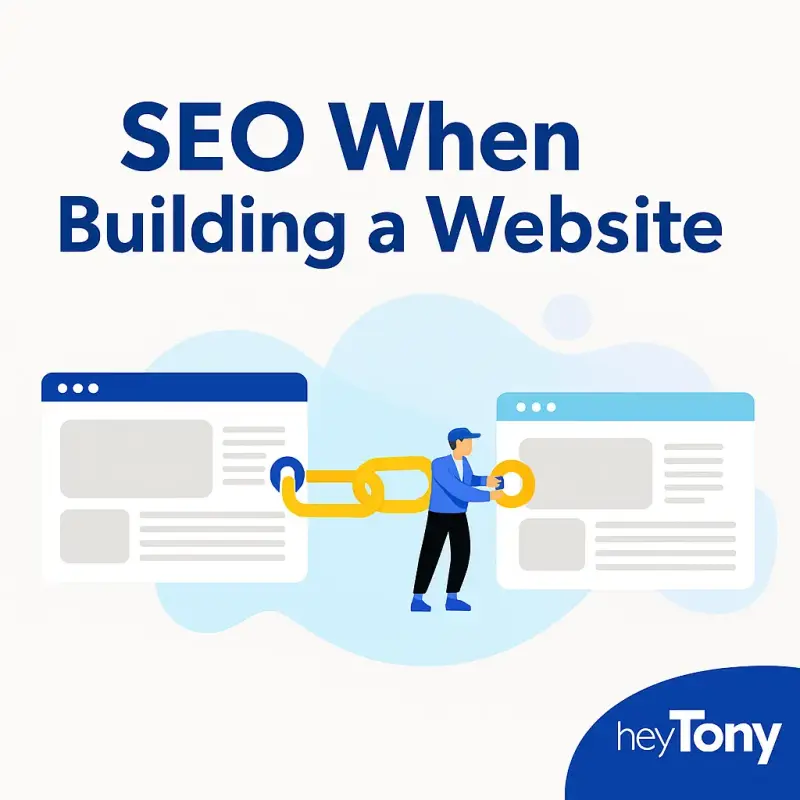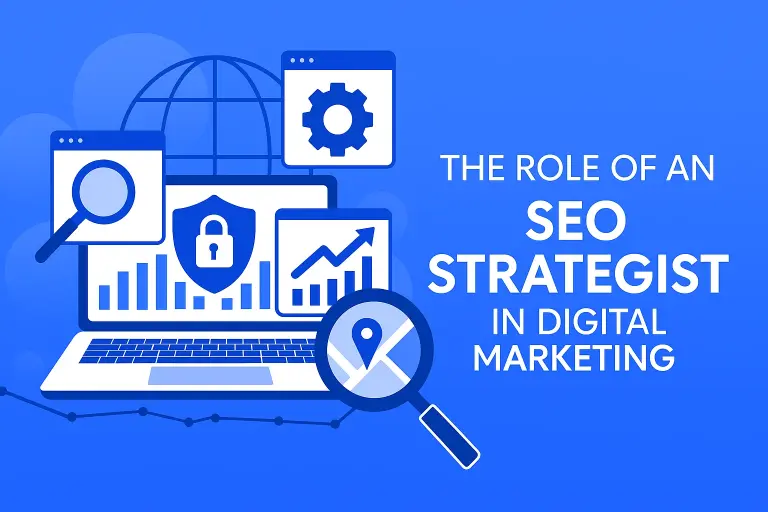Most people think SEO happens after you build a website.
That’s wrong — and it’s the #1 reason new sites don’t rank.
If you want your site to actually show up on Google, generate leads, and grow your business, SEO needs to happen before, during, and after the build. Here’s exactly how to do it based on my experience building, fixing, and ranking hundreds of sites. And you don’t need to spend thousands of dollars paying an agency to do this for you. But if you wanted to here’s an SEO cost breakdown.
The #1 SEO Mistake People Make When Building a Website
They don’t plan.
Before you touch a website builder, choose a theme, or think about colors, you need a site map. This includes all of your core pages — the pages Google and your customers need from day one.
At minimum, your site should launch with:
- Homepage
- Services Overview Page (or Product Overview Page)
- Individual Service Pages (one page per service — never bundle them)
- Contact Page
- Blog Page (no blog posts required at launch)
For example, if you’re a dentist, “Teeth Whitening,” “Invisalign,” and “Dental Implants” should each be their own page. Google only indexes one topic per page. Don’t make it guess.
SEO Should Start Before Design
SEO isn’t the final step — it’s the blueprint.
Before a single pixel is designed, you should already know:
- What each page will be
- What keyword each page targets
- What the title tag, meta description, and H1 tag will be
- The general content outline for those pages
Example:
If one of your services is Teeth Whitening in Hamilton, the page should be structured around:
- Title Tag: Teeth Whitening Hamilton | Your Brand Name
- Meta Description: A helpful, local, keyword-rich sentence
- H1 Tag: Teeth Whitening Hamilton
- Service-focused content written before design begins
This ensures you don’t design a beautiful site that can’t rank.
We use a variety of SEO tools at HeyTony to find keywords and optimize websites!
Non-Negotiables When Building a Site for SEO
A website that ranks must check all of these boxes:
Speed first
Upload WebP images, not heavy JPEGs or PNGs.
Fixing images later means redesigning half your site.
Do it right the first time.
One H1 tag per page
Some designers use H1 tags just to make text bigger.
That destroys SEO.
Your H1 tells Google exactly what the page is about.
You only get one.
Mobile-first experience
Most people design their website on a big monitor, then “check mobile later.”
But most traffic comes from mobile.
If a user has to tap five times to find your service page, you’ve lost them.
Clean URL structure
Use short, readable URLs like:
/teeth-whitening-hamilton
Not:
/services/1234/teeth-whitening-hamilton-local-dental-care-best-price
Keyword stuffing your URLs won’t help you. Google will just ignore them.
Case Study: How SEO Built a Business From the Ground Up
One of the first clients I ever worked with was a small bin rental company.
They had no website, no rankings, nothing.
We built the site with SEO in mind.
Within 1–2 years:
- They ranked #1 for 150+ keywords
- They grew from 11 bins to 120+ bins
- Their revenue exploded
- They moved from renting an apartment → buying a home → upgrading again
- Their site became their #1 sales channel
They didn’t run ads.
They didn’t do social.
They did SEO — properly — from day one.
That’s the power of building a website the right way.
A Horror Story: What Happens When You Redesign Without SEO
On the other side of the spectrum…
We once had a client redesign their entire website without talking to us.
They changed:
- Every URL
- Every piece of content
- Every page layout
Their rankings tanked immediately.
Changing URLs is like changing your business address without telling anyone — Google can’t find you anymore. And if you had backlinks pointing to those old URLs?
You just threw away years of authority.
If you redesign:
- Keep URLs identical
- Keep core content intact
- Keep ranking pages recognizable to Google
- Redirect only when absolutely necessary
Ignoring this will destroy your traffic.
The Best CMS Platforms for SEO
WordPress
Best for service-based businesses. Flexible. SEO-friendly. Powerful.
Shopify
Best for e-commerce. Clean structure. Easy to optimize.
Wix & Squarespace
Beginner-friendly, but limited. Great for simple websites — not great for long-term SEO performance.
Use them if you must, but know what you’re sacrificing.
How Many Pages Should You Launch With?
Anywhere between 5 and 30 pages works — as long as you launch with:
- Homepage
- Contact
- Blog page
- Services overview
- Every core service page fully optimized
You don’t need blogs on day one.
But you do need the structure.
How I Do Keyword Research for New Websites
I keep it simple:
- Money keywords (your services)
- Local keywords
- Easy-win keywords where competition is low
- Product keywords if you’re e-commerce
If someone searches “Teeth Whitening Hamilton”, your page better show up — and it better include:
- The keyword
- Descriptive headings
- Structured content
- Internal links
- Supporting blog posts later on
After launch, you should publish 1–2 blog posts per week and internally link each post to at least one of your core service pages.
A Controversial Opinion About Web Designers
Most web designers use heading tags wrong.
They’ll put 10 H1 tags on a page because they like how it looks.
This is a huge SEO problem.
Heading tags are not a design tool — they’re a semantic tool.
They tell Google what matters.
- H1 = main topic
- H2 = supporting topics
- H3+ = subtopics
If your headings are a mess, your SEO will be too.
What Every Business Owner Should Understand Before Launching
A brand-new site takes 6–12 months to rank.
That’s normal.
Google doesn’t trust new sites immediately.
You earn trust with:
- Useful content
- Internal links
- Time
- Consistency
This is why your SEO plan must start the moment you begin building your website.
Want Help With Your SEO?
Whether you’re building a website, redesigning an old one, or trying to climb Google’s rankings, starting with SEO in mind is the difference between a site that looks pretty and a site that prints money. Explore HeyTony’s SEO Services
Originally published . Last updated .
Categories:
Explore More



